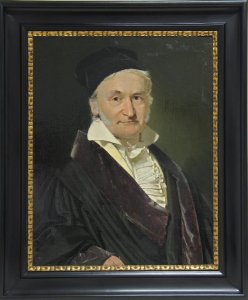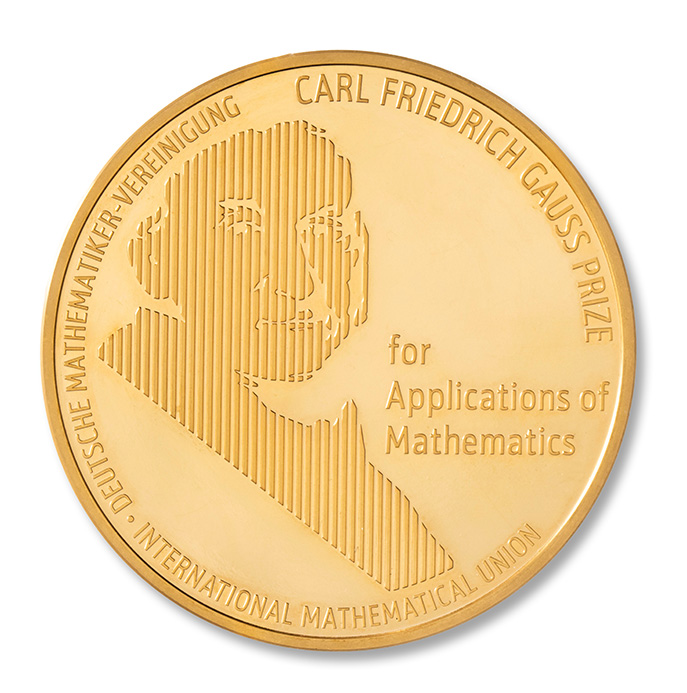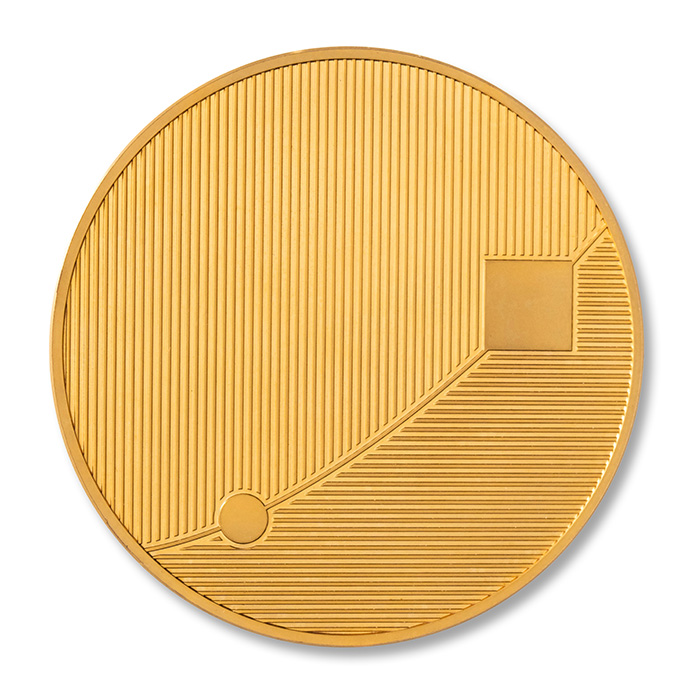Carl Friedrich Gauss Prize
It seems that only the experts know that mathematics is a driving force behind many modern technologies. The Gauss Prize, awarded for the first time in August 2006, has been created to help the rest of the world realize this fundamental fact. The prize is to honor scientists whose mathematical research has had an impact outside mathematics – either in technology, in business, or simply in people's everyday lives.
The Gauss Prize is awarded jointly by the Deutsche Mathematiker-Vereinigung (DMV = German Mathematical Union) and the International Mathematical Union, and administered by the DMV. The prize consists of a medal and a monetary award. The source of the prize is a surplus from the International Congress of Mathematicians (ICM '98) held in Berlin.
With the Gauss Prize the IMU has broadened the range of its awards, now including the influence of mathematics to other disciplines. The award ceremony includes a brief overview of the achievements of the prize winner. The presentation of the mathematical work will be addressed to the general public as well as journalists, so that all may appreciate the importance of mathematics for everyday life.
The Gauss Prize Committee is chosen by the Executive Committee of the International Mathematical Union.
The name of the Chair of the Committee is made public, but the names of other members of the Committee remain anonymous until the award of the prize at the Congress.
Statutes for the Carl Friedrich Gauss Prize
The details of the Award, the nomination, and the selection can be found in the Statutes for the Award.
Physical Medal
Interpretation of the medal
Soon after Giuseppe Piazzi discovered the celestial body Ceres on January 1st, 1801, Ceres disappeared from view, and there were no reliable techniques available to predict its orbit from Piazzi's limited observational data. Introducing a revolutionary new idea, the now well-known least squares method, Carl Friedrich Gauss was able to calculate Ceres' orbit in a very precise way, and in December 1801 Ceres was rediscovered by the astronomer Zack very close to the predicted position.
This impressive example illustrating the power of the applications of mathematics provided the general idea for the design of this medal.
Dissolved into a linear pattern, the Gauss effigy is incomplete. It is the viewer's eye which completes the barcode of lines and transforms it into the portrait of Gauss.
A similar pattern, accomplished by horizontal lines, is one of the features on the back of the medal. This grid is crossed by a curve. The disk and the square, two elements connected by the curve, symbolize both the least squares method and the discovery of Ceres' orbit.
The mathematical language has been reduced to its most fundamental elements, such as point, line and curve. Moreover, these elements represent natural processes. The imagery of the medal is a synthesis of nature's and mathematics' sign language.
Medal designer Jan Arnold
About the Gauss Portrait

The scan shows the best known portrait of Carl Friedrich Gauss. The original of this portrait was painted in 1840 by the Danish artist Christian Albrecht Jensen (1792 - 1870) for the Pulkovo observatory*, where it is still at present.
In 1840 Christian Albrecht Jensen reproduced this painting for Professor B.J. Listing, for Professor W. Weber, and for Professor W.S. von Waltershausen.
The Gauss portrait shown is a scan of the painting copied for Professor Listing. It was bought on December 29, 1883 by the National Gallery Berlin from Mrs. Professor Listing and was donated to the Prussian Academy of Science by the "Ministerium der geistlichen, Unterrichts- und Medicinalangelegenheiten" on October 13, 1888. It is now owned by the Berlin-Brandenburg Academy of Sciences and Humanities (BBAW). The BBAW holds the copyright on the scan of the portrait.
A first restoration of the picture was done in 1945, a major restoration in 1988 by the restorer Bernd Dombrowski, Berlin.
Göttingen University, where Gauss spent most of his scientific life, also owns a copy of the Gauss portrait. It was painted in 1887 by G. Biermann and most likely reproduced from Professor Weber's copy.
The last German 10 DM bill (before the Deutsche Mark was replaced by the EURO) shows an image of Gauss. It is a mirror-inverted and simplified copy of the Jensen portrait. The medal presented to the Gauss Prize awardees has also been modeled after this portrait.
*Pulkovo is a village close to St. Petersburg (Russia). Its observatory was opened in 1839; today it hosts the Central Astronomical Observatory of the Russian Academy of Sciences. The first director of this observatory was the well-known astronomer Friedrich Georg Wilhelm Struve who was succeeded by his son Otto Wilhelm, see here.
The Gauss Prize winners, chronologically listed
2010
2006
Former Prize Committees
2022
- Éva Tardos (chair)
Liliana Borcea
Albert Cohen
Bernd Sturmfels
Tao Tang
2018
- Björn Engquist (chair)
Maria J. Esteban
Motoko Kotani
Martin Nowak
Andrew Stuart
Nick Trefethen
Bin Yu
2014
- Alfio Quarteroni (chair)
Weinan E
Barbara Keyfitz
Andrés Weintraub
Aad van der Vaart
2010
- Wolfgang Dahmen (chair)
Rolf Jeltsch
Servet Martinez Aguilera
William R. Pulleyblank
2006
- Martin Grötschel (chair)
Robert E. Bixby
Frank den Hollander
Stephane Mallat
Ian Sloan
Carl Friedrich Gauss
Carl Friedrich Gauss (1777-1855) was one of the greatest mathematicians of all time. He combined scientific theory and practice like no other before him, or since, and even as a young man Gauss made extraordinary contributions to mathematics. His Disquisitiones arithmeticae, published in 1801, stands to this day as a true masterpiece of scientific investigation. In the same year, Gauss gained fame in wider circles for his prediction, using very few observations, of when and where the asteroid Ceres would next appear. The method of least squares, developed by Gauss as an aid in his mapping of the state of Hannover, is still an indispensable tool for analyzing data. His sextant is pictured on the last series of German 10-Mark notes, honoring his considerable contributions to surveying. There, one also finds a bell curve, which is the graphical representation of the Gaussian normal distribution in probability. Together with Wilhelm Weber, Gauss invented the first electric telegraph. In recognition of his contributions to the theory of electromagnetism, the international unit of magnetic induction is the gauss.

